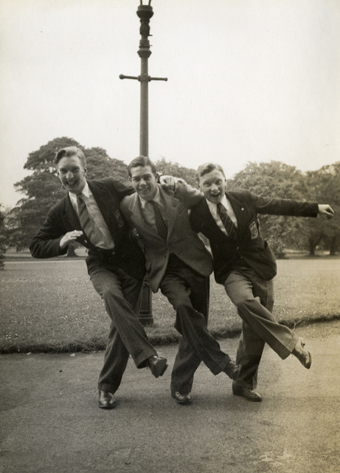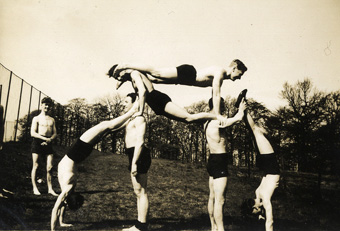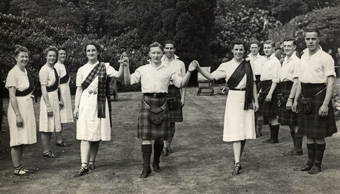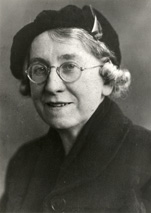This was originally published in January 2011, as part of our Item of the Month series.
If your New Year’s Resolutions includes joining a gym, dance class or simply taking more exercise, find some inspiration in the papers of William J. Ireland (1924-2002), graduate of the Scottish School of Physical Education and eminent teacher of Scottish country dance.
Bill Ireland grew up in Glasgow, where he attended the Scottish School of Physical Education (SSPE) from 1942-45. Established at Jordanhill College in 1931, the SSPE was the only training centre for male teachers of physical education in Scotland, with fierce competition for places. Its diploma-holders consequently enjoyed a reputation for excellence. Bill was a particularly diligent student and took copious notes of the classes in anatomy, hygiene, theory of physical education, history of physical education, and theory of games. These he carefully copied out in blue ink, illustrated with hand-drawn diagrams and stick figures (pictured), and filed in neat black ring-binders, already demonstrating the self-discipline and fastidiousness that would characterise his subsequent career. The handwritten note reads:
Trunk leaning sideways. Trunk leaning sideways, the pelvic table is tilted sideways by raising the leg opposite to the leaning or bending of the leg on the side of the leaning, or both these actions may take place together.
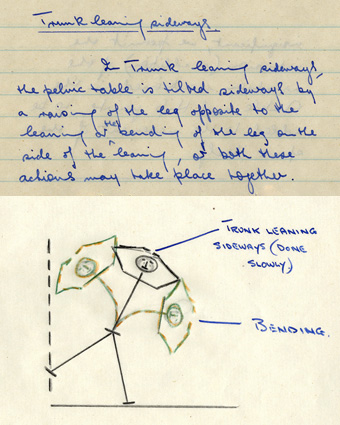
Bill Ireland’s student notes form the core of his papers, and illuminate both the content and nature of physical education in the early 1940s. An official drive to improve the health of the nation at the start of the twentieth century, prompted by the poor physical condition of volunteers for the Boer War, led to a strong medical emphasis within British physical education courses that persisted until the 1950s. Aspiring PE teachers accordingly learned to ‘recognise and counter the effects of poverty and deprivation’ (Small, p.146). As we might expect, Bill’s notes also reflect the parlance of the day: for example, the distribution of fat on an adult woman’s upper arm (one of the physiological differences between males and females as taught in the Theory of Physical Education class) is tactfully described as
one of the charms of womanhood!
The notes are complemented by 96 delightful black-and-white snapshots of Bill and his classmates, mostly taken on the Jordanhill Campus. These images evoke all the humour, liveliness and camaraderie for which students of the SSPE were known.
